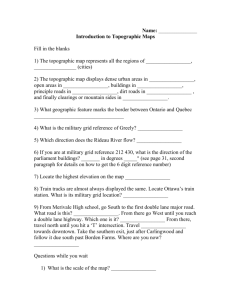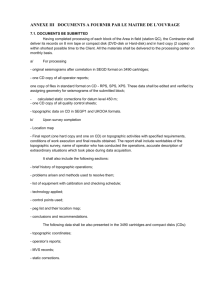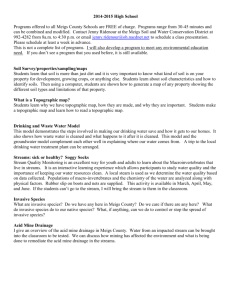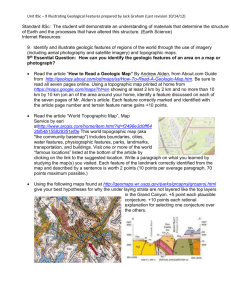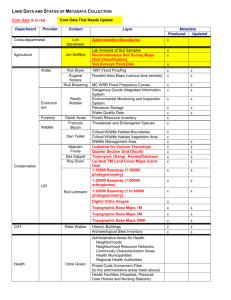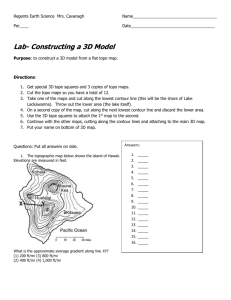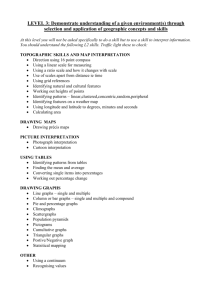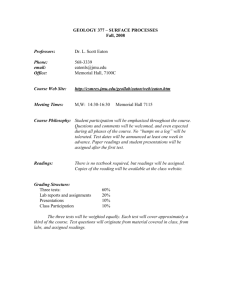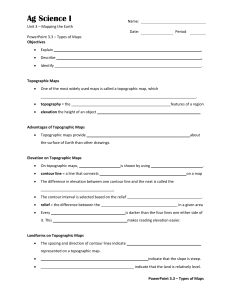Activity - Introduction to map reading
advertisement
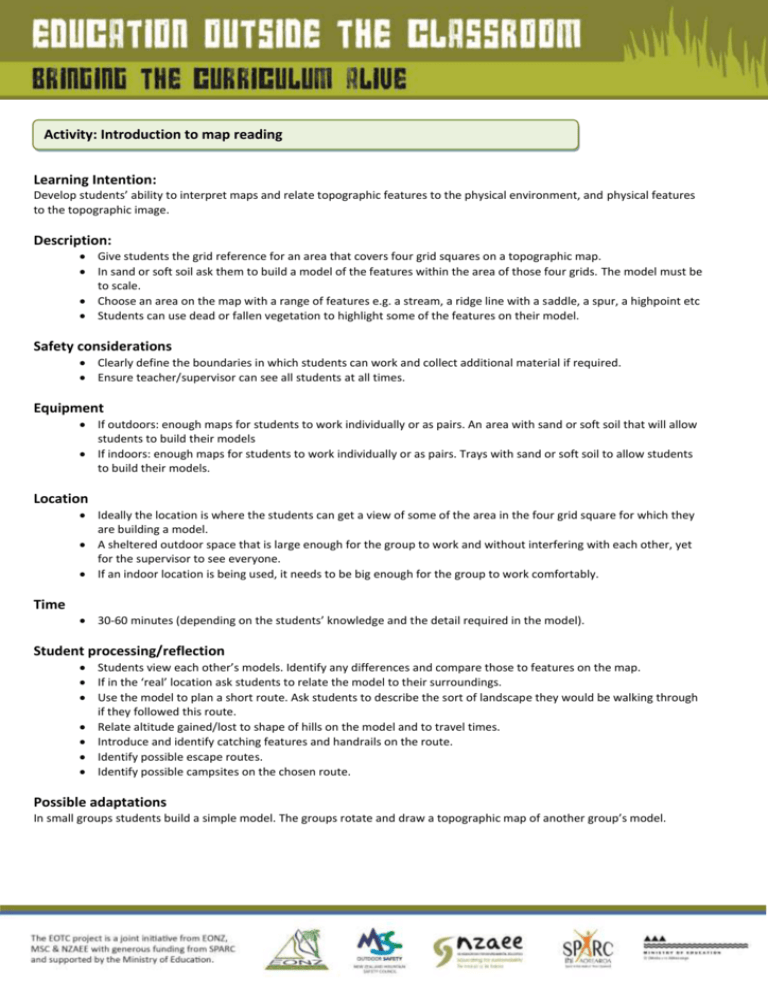
Activity: Introduction to map reading Learning Intention: Develop students’ ability to interpret maps and relate topographic features to the physical environment, and physical features to the topographic image. Description: Give students the grid reference for an area that covers four grid squares on a topographic map. In sand or soft soil ask them to build a model of the features within the area of those four grids. The model must be to scale. Choose an area on the map with a range of features e.g. a stream, a ridge line with a saddle, a spur, a highpoint etc Students can use dead or fallen vegetation to highlight some of the features on their model. Safety considerations Clearly define the boundaries in which students can work and collect additional material if required. Ensure teacher/supervisor can see all students at all times. Equipment If outdoors: enough maps for students to work individually or as pairs. An area with sand or soft soil that will allow students to build their models If indoors: enough maps for students to work individually or as pairs. Trays with sand or soft soil to allow students to build their models. Location Ideally the location is where the students can get a view of some of the area in the four grid square for which they are building a model. A sheltered outdoor space that is large enough for the group to work and without interfering with each other, yet for the supervisor to see everyone. If an indoor location is being used, it needs to be big enough for the group to work comfortably. Time 30-60 minutes (depending on the students’ knowledge and the detail required in the model). Student processing/reflection Students view each other’s models. Identify any differences and compare those to features on the map. If in the ‘real’ location ask students to relate the model to their surroundings. Use the model to plan a short route. Ask students to describe the sort of landscape they would be walking through if they followed this route. Relate altitude gained/lost to shape of hills on the model and to travel times. Introduce and identify catching features and handrails on the route. Identify possible escape routes. Identify possible campsites on the chosen route. Possible adaptations In small groups students build a simple model. The groups rotate and draw a topographic map of another group’s model.
